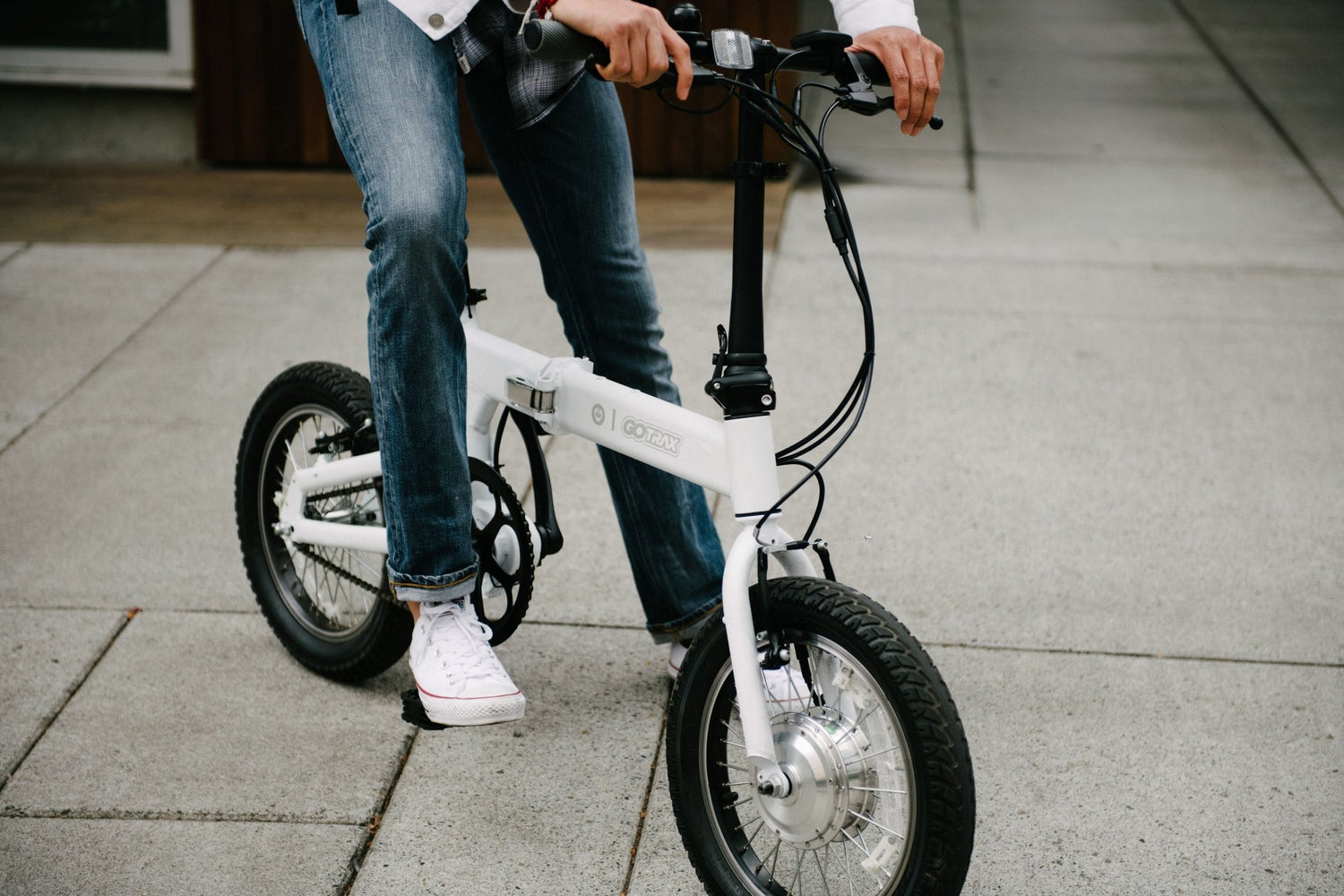The last couple of years have seen massive growth in micro-transportation solutions and electric vehicles. Tesla has captured the attention and hearts of many through their growing brand of electric vehicles, especially with the recent launch of their Telsa Cybertruck. Electric transport has started seeping into our cities too. Electric car charging stations are becoming more common. In micro-transportation, electric scooters and electric bikes are proliferating the trend through ride share programs, like Bird, Spin, Lime, and Jump. We are starting to see these electric vehicles everywhere. This in turn is making electric vehicles, specifically scooters and bikes, a reasonable solution to emerging transportation dilemmas. Overcrowding of city streets and gridlock are huge infrastructure problems. These small vehicles are simple solutions.
A popular method to commute without the use of car is on a bicycle. They are one the most efficient methods of transport and have very low carbon footprints, none if you don’t count materials and production. Bike commuting has many advantages over other alternative methods. The government of the District of Columbia has grouped them into three distinct categories; Sustainability, Personal Health, and Cost Savings. In summation; bike commuting has massive physical and mental health benefits, its annual cost are about $300 whereas cars are $8,000-$10,000, and removing a car from the road saves our planet and helps traffic congestion. Biking to work can be a great experience and is truly a great alternative way to commute, but there are some pitfalls to consider. Not everyday is a “bikeable” day. When inclement weather occurs the ride can be unbearable, especially without the proper gear, and unsafe, due to the bike path and road conditions. The other aspect of the bike commute that can make it unappealing is the sweat resulting from a good commute. If you have to travel a long distance or uphill, a bike commute can be very taxing and result in some unsavory sweat spots. The latter has been addressed through the advent of electric bikes! They offer the same advantages to bike commuting and are still vastly more efficient in cost and emissions. The only difference between a bike and electric bike commute is the pedal assist. When encountering difficult terrain or long rides, the pedal assist makes for a vastly less physically strenuous commute.

These bikes are hugely popular and have been massively successful in places like Seattle and San Francisco. These cities are pushing the envelopes in transportation solutions. Being cities that are rapidly expanding and experiencing city-wide congestion. The cities have varying terrain and are known for their steep hills. These cities have had much success with expanding bike/scooter share programs. It is no surprise that the popularity of electric bikes are growing in these towns.
As electric bikes grow in popularity, they are becoming accepted in other bikeable areas. As of August 30, 2019 Electric Bikes are allowed in US National Parks. This is an exciting win in the electric biking community. Electric bikes were not allowed in electric parks because they were more or less of an unknown. Manual cyclists were worried about how electric bikes would be integrated into their ecosystem. One of the biggest fears being that they cyclists on electric bikes would make a more dangerous environment on the trails. Electric bikes have higher speeds than plain bicycles and could be dangerous when sharing the same trails in National Parks. Another fear was that electric bikes would lead to more inexperienced cyclists on these trails, thus endangering themselves as well as more experienced cyclists on these trails. We won’t know the full effect of this change for some time, but we can foresee some positives changes are a result. Electric bikes, already surging in popularity in Europe, will make the outdoors more accessible. An entire family can now go out and explore, on bike, without physical ability being a limiting factor. The kids and parents can ride with their grandparents without having to worry about the strain of this type of exploration. It could even lead to further growth in the popularity of US National Parks, but in all reality only time will tell.

For many of us the electric bike will change how we commute. Making it more accessible and easier to get through our cities and towns. As we’ve discussed before changing the way we commute can save money, time and sanity. GOTRAX has a electric bike of its own, the Shift S1 Commuter E-Bike. The Shift S1 is an efficient and compact commuter E Bike. It has a durable folding frame, which can carry most riders to their destination yet can fold up to be taken on public transit or stored in an office. The Shift S1 also has an integrated pedal assist, activated by a simple push of a button. This enables riders to pedal their own way if they like, but once hills are encountered you can swiftly climb without interruption. The battery is small enough to fit in your knapsack, so you need not worry about someone stealing your pack. It also has a USB port so you can also charge your phone on the go. The Shift S1 also has built-in lights and reflectors, to keep you safe and seen while riding around. With top speeds of 20 mph and a maximum charge of 16 miles, the Shift S1 Commuter Bike is sure to get you to your destination swiftly and with out sweat. If you are still curious about the Shift S1, we have more information on how you can commute better.
Electric Bikes are here to stay, that much is clear. What they will be used for and where they will be used is to be seen. But, the possibilities are near limitless. Electric bikes and scooters are currently reshaping how are cities operate. As younger generation ditch their cars for alternative methods, these are clearly a positive solution. Check out our collections and explore your possibilities in the transportation revolution!






